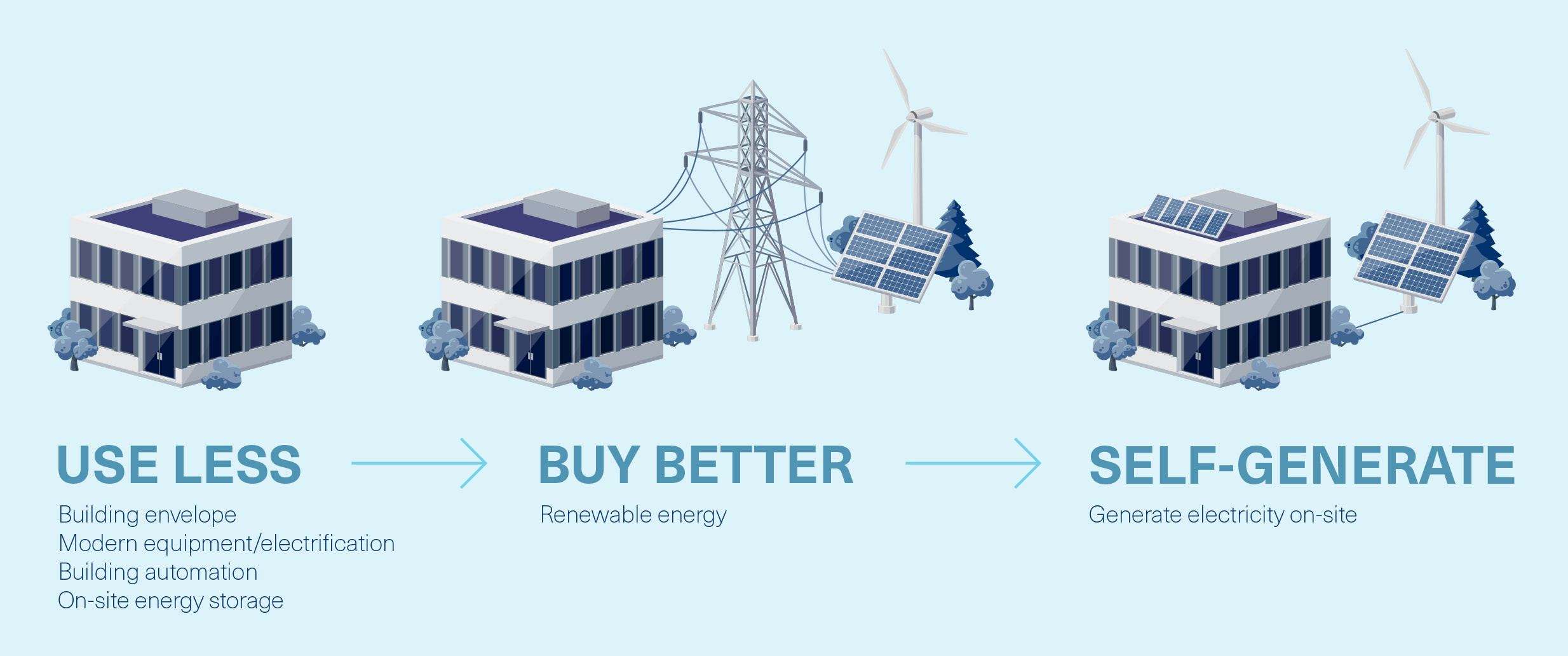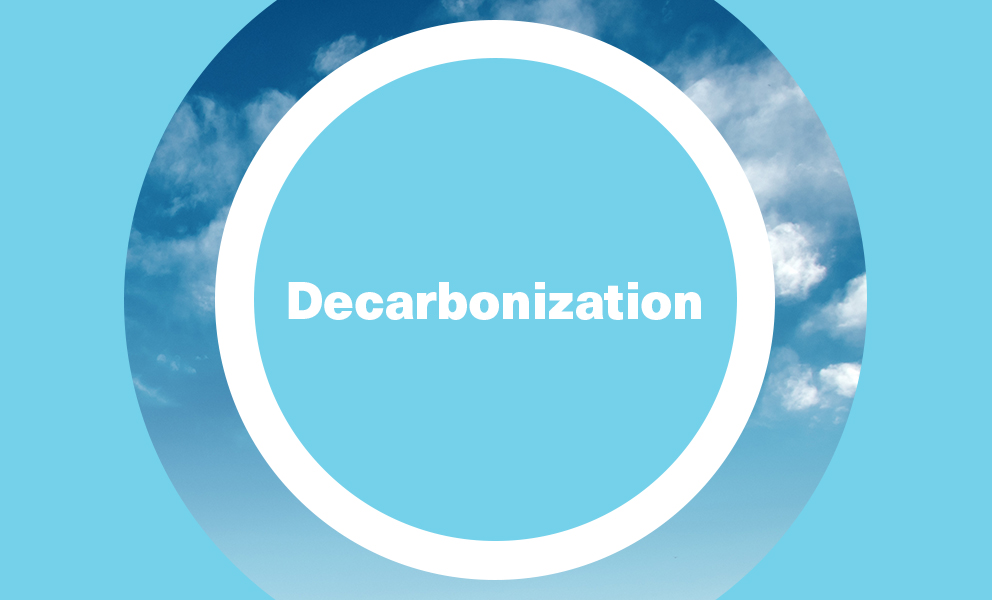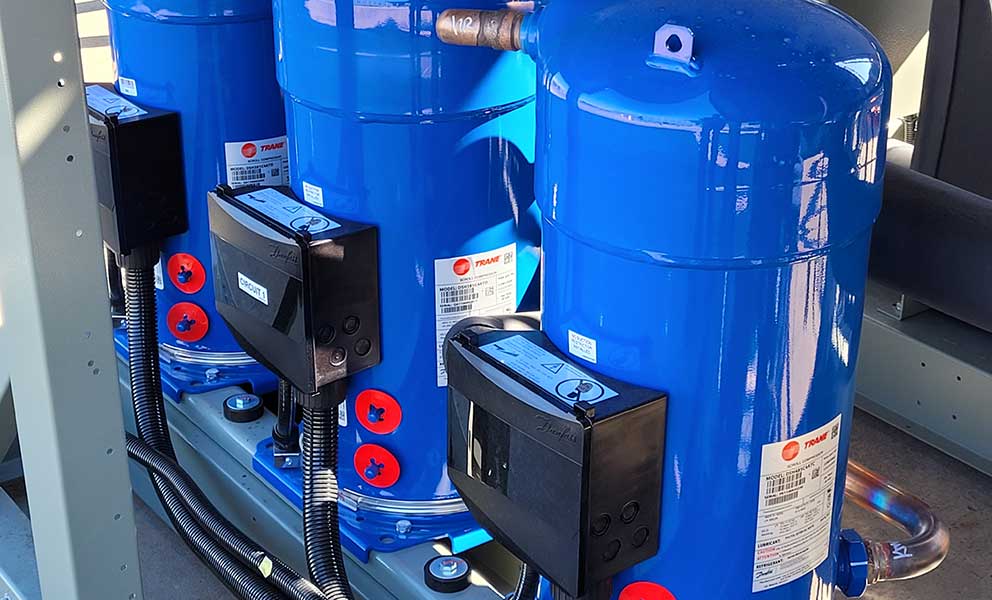In recent years, much attention has been focused on the concept of energy efficiency. Companies of all sizes are prioritizing decarbonization and other energy-saving efforts by creating short- and long-term sustainability plans. One important strategy is for companies to ensure one of their largest assets - their buildings - are energy efficient.
Energy-efficient buildings use less resources to operate the building without compromising comfort or reliable energy output. There are a variety of ways to make help make a building energy efficient, and through thoughtful planning and actions, companies can achieve high energy efficiency through and help to lower energy costs on their buildings.
As we identify characteristics of an energy-efficient building, it is also important to understand where many inefficiencies can be found. Learn more about what causes carbon production in buildings
The best examples of energy-efficient buildings model three (3) key principles:
USE LESS → BUY BETTER → SELF-GENERATE.
When these principles are applied, customers can achieve their sustainability goals by using fewer resources and reducing carbon emissions.

Use Less
Most often seen as the first step, using less energy can be achieved immediately through:
- Building Envelope Improve the structure of the conditioned space to limit the heat entering or escaping (through doors, windows, ductwork), thus helping to reduceing the amount of cooling/heating stress on your system.
- Modern Equipment/Electrification Convert to the most energy efficient equipment and solutions. There are a variety of options including, hybrid or all-electric heating systems using heat pumps, dual fuel, heat recovery, or thermal energy storage technologies. Updating lighting options and leverage low-GWP refrigerants will minimize direct GHG emissions that also cause inefficiencies
- Building Automation Install equipment controls and “smart” meters that regulate the temperature and ventilation in occupied spaces and offer direct digital control for airside systems. This proactive approach maintains and optimizes comfort and cost performance, preventing electricity waste.
- On-Site Energy Storage Capture and store thermal energy via the electrical grid or reclaim thermal sources to be discharged for heating and cooling systems. This on-site storage enables your building to purchase and store energy when it’s cheaper and cleaner and then use it when energy costs are higher.
Buy Better
The second vital principle of an energy-efficient building is specific to the energy supply and requires shifting to more renewable sources.
- Renewable Energy Purchase renewable energy directly through Power Purchase Agreements in partnership with other large energy buyers OR buy renewable electricity directly from your utility provider.
Self-Generate
Once a building is running on renewable energy, the final principle requires making the change to manage your own renewable energy production. This step allows a building to reach its peak energy efficiency.
- Generate Electricity On-Site Install renewable energy sources like solar and wind. Companies can help to improve the resiliency of their building’s operations and bring emissions intensity to near zero all while continuing to help reduce energy costs over the long term.
Want to learn if your building is energy efficient?
Trane’s team of experts will support your journey to decarbonization by assessing your needs with an energy audit and providing a strategic plan that fits your goals.




































































































